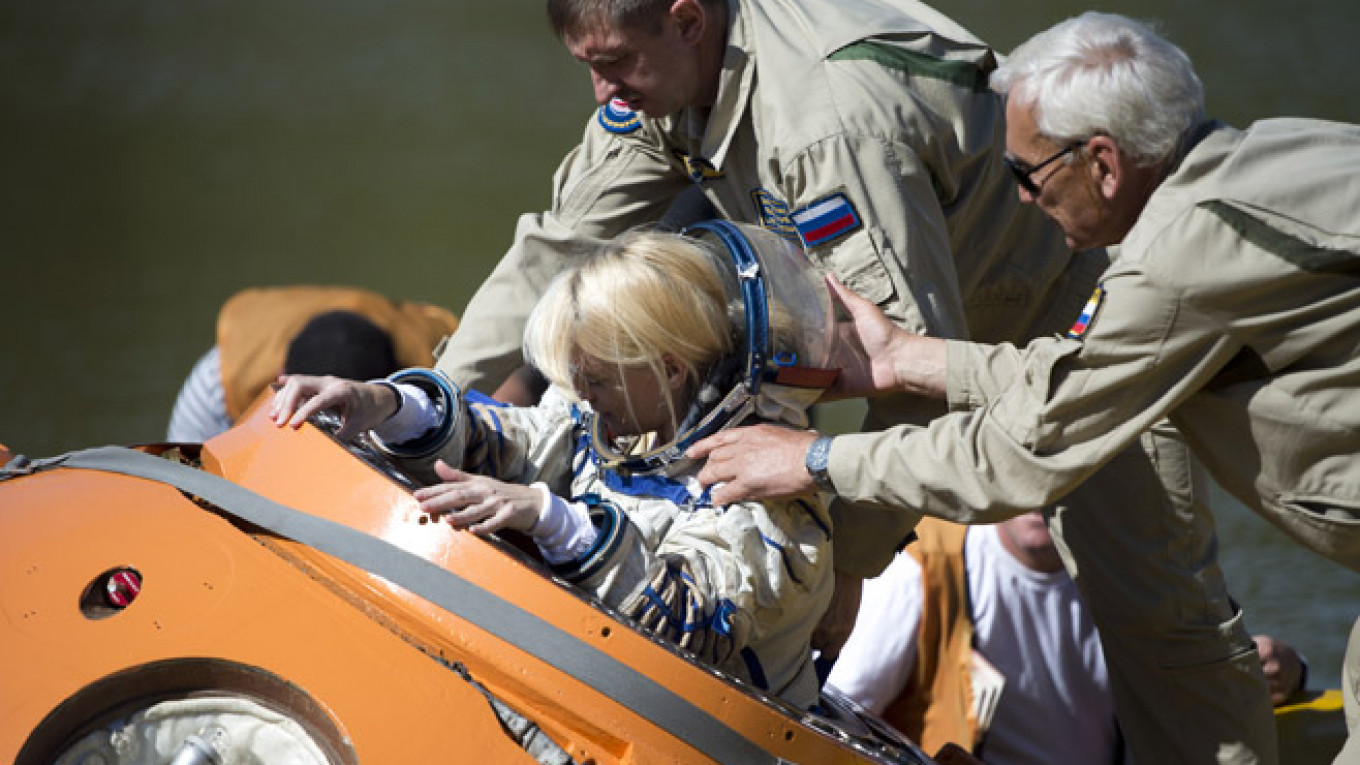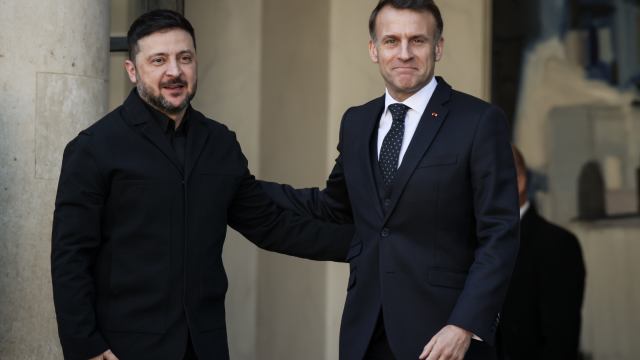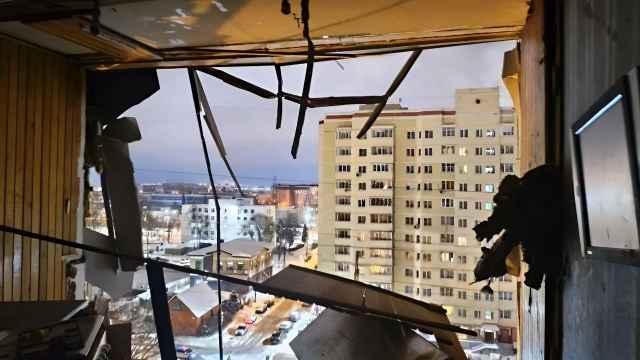Floating on a small pond near Star City, a town that 30 years ago was closed to foreigners, an international crew of Russian, Japanese and American astronauts crammed into an old Soyuz training module to practice the skills that will save their lives if they are forced to evacuate the International Space Station during their 2016 space mission.
This training is but one small piece of an exhaustive two year process by which Russian cosmonauts and foreign astronauts learn each other's languages and forge the bonds that will allow them to work together seamlessly in the unforgiving environment of space.
See the photo gallery: Cosmonauts Training to Land in Water
"Right now we are training them to work as a team of three. They must trust each other, help each other, and manage each other," Viktor Ren, the deputy head of the Yury Gagarin Cosmonaut Training Center's Office of Research and Testing, told reporters at the training exercise on Wednesday.
The crew includes veteran cosmonaut Anatoly Ivanishin — a former Russian fighter pilot who served aboard ISS in 2011 — and rookie astronauts Takuya Onishi of the Japanese Aerospace Exploration Agency and NASA's own Kate Rubins. Both Rubins and Onishi are looking ahead to their first trip to space, having only been selected for the astronaut corps in 2011.
The newest international team of cosmonauts and astronauts preparing for a trip to the International Space Station has begun summer training in Russia.
By the time Expedition 48/49 launches to ISS in 2016, they will have mastered the Russian Soyuz spacecraft, the plethora of systems and equipment awaiting them aboard ISS and — most challenging of all — Russian grammar.
"For me rocket science is much less complicated than Russian grammar and vocabulary. So one of the more difficult, but frankly more interesting and fun aspects of spaceflight is that part of it," said Daniel Burbank, NASA's new head of operations at the training center and veteran of two U.S. Space Shuttle missions and a stay aboard ISS in 2011.
Before they launch in 2016, the crew will fly back and forth multiple times between Houston and Star City, located about 30 kilometers northeast of Moscow, while stopping off regularly at the training centers of the Canadian, European and Japanese space agencies. They will set off to Houston next week for further training before returning to Star City in September.
Water Landings
But before leaving for Houston, the crew of Expedition 48/49 had to go through a training session that envisioned a situation straight out of the recent blockbuster "Gravity." In the event that something catastrophic takes place aboard the station, the crew will hop aboard one or two Soyuz escape pods for an immediate descent back to Earth.
Depending on the timing, Soyuz might not be in a position to land at one of its predesignated recovery zones. With more than 70 percent of the Earth's surface covered by water, the chances of an ocean landing are high, and the crew must learn how to survive in the ocean until rescue teams arrive.
One of the first things the crew needs to do is take off their spacesuits — something Sandra Bullock's character should have done in "Gravity" before trying to exit the Soyuz capsule.
"Generally speaking, we like to do this training in the summer time, as the added heat and carbon dioxide buildup in the Soyuz makes it more difficult for the crew," Burbank said.
The Soviets incorporated water survival exercises into their cosmonaut training program after the 1976 Soyuz-23 mission landed in Kazakhstan's Lake Tengiz - the first time a Soyuz capsule had splashed down in a body of water. The lake was partially frozen and covered in a thick fog, complicating recovery efforts. In total, the Soyuz crew had to wait 9 hours for rescue teams to arrive.
The training is conducted an hour outside Star City, on a small pond on the premises of a base for Russia's Emergency Situations Ministry. There, instructors from the cosmonaut training center worked with engineers from the Energia Rocket and Space Corporation — the company that builds Soyuz — to ready the bright-orange, bell-shaped Soyuz training capsule.
While the Expedition 48/49 crew wrestled their way into their off-white Sokol spacesuits in a tent just beyond the tree-line, the Soyuz capsule was strapped to a large crane and hoisted into the water. When the capsule was released from the crane's grasp, Energia's team opened the hatch and jumped in to power it up.
As the assembled news teams jumped into gear, the crew made their way to the dock. The team's commander, Ivanishin, stopped to explain that what would take place inside the floating spacecraft was a little bit "like a cartoon."
"Taking off the spacesuit and putting on the wet-suit [inside the capsule] is not easy. But, we are trying to do it again," Ivanishin said.
With the crew inside Soyuz, three dinghies towed the capsule to the center of the pond while an Emergency Services helicopter buzzed the scene. A team of divers in wet-suits anchored the orange bell in place, and the wait began.
For almost two hours, the only signs of action were seen through a small porthole on the capsule's side. Inside, the crew struggled to take off the spacesuits and put on their orange survival gear in the confines of the notoriously small Soyuz cabin.
Finally the crew opened the hatch, clawed their way out of the vehicle, and one-by-one plopped back first into the pond before swimming together and lighting a flare.
This was all part of a larger series of emergency landing and survival scenarios that they will rehearse during their stints in Star City over the next two years. When winter comes, they will train to survive an emergency landing in the Taiga, where the average winter temperature can drop to minus 20 degrees Celsius.
The Language Barrier
While the survival trainings may be rigorous, there is an even tougher challenge ahead. Although English is the lingua franca aboard the International Space Station, the Soyuz spacecraft that transports crews to the space station and back has been an entirely Russian affair since the retirement of the U.S. Space Shuttle fleet in 2011, and astronauts, as a result, are required to learn Russian.
"[Depending on their job], we want our U.S. crews be at the Intermediate-High or Intermediate-Low level. And, of course, the expectation is that they will advance over the course of their approximately two-year training," Burbank said.
Translators accompany astronauts through most of their training to act as a crutch when crew members get stuck on words during lessons. But there is no room to spare in the cramped cockpit of the Soyuz simulator, so the astronauts quickly learn to use the Russian they will need in space.
To bolster their technical vocabularies with everyday language, NASA and its partner agencies even send their astronauts to live with Russian families for four to six weeks, if the training schedule permits.
"We all enjoy that particular aspect of [training,]" Burbank said, "it is really rewarding."
A form of "Ruslish" has emerged over the years on ISS, Burbank added.
Learning each other's languages it not just a matter of convenience. To work together in space, astronauts and cosmonauts must learn to anticipate each other's moves and work together seamlessly.
This deeply felt trust and understanding was clear in the tightly integrated community of NASA and Roscosmos officials at the training center, where space officials on both sides spoke highly of each other and professed a shared commitment to international cooperation in space.
The breakdown of relations between the U.S. and Russia over the crisis in Ukraine has cast doubts on the future of the International Space Station partnership, and Deputy Prime Minister Dmitry Rogozin said in April that Russia may not accept NASA's proposal to extend the program beyond its current 2020 expiration date.
But on the ground the partnership shows no signs of flagging, as representatives of the 15 partner nations work together tirelessly to prepare their astronauts and cosmonauts for one of mankind's most dangerous, and ambitious, undertakings.
See also:
Next Angara Launch Attempt Weeks Away
Contact the author at [email protected]
A Message from The Moscow Times:
Dear readers,
We are facing unprecedented challenges. Russia's Prosecutor General's Office has designated The Moscow Times as an "undesirable" organization, criminalizing our work and putting our staff at risk of prosecution. This follows our earlier unjust labeling as a "foreign agent."
These actions are direct attempts to silence independent journalism in Russia. The authorities claim our work "discredits the decisions of the Russian leadership." We see things differently: we strive to provide accurate, unbiased reporting on Russia.
We, the journalists of The Moscow Times, refuse to be silenced. But to continue our work, we need your help.
Your support, no matter how small, makes a world of difference. If you can, please support us monthly starting from just $2. It's quick to set up, and every contribution makes a significant impact.
By supporting The Moscow Times, you're defending open, independent journalism in the face of repression. Thank you for standing with us.
Remind me later.






